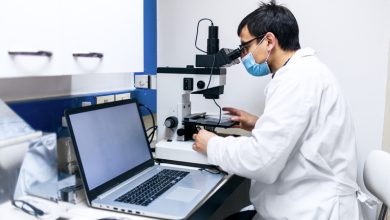NOVAS TECNOLOGIAS
Índia: Nova Lei de Gerenciamento de Agroquímicos deve incentivar a introdução de novos produtos
Índia: Nova Lei de Gerenciamento de Agroquímicos deve incentivar a introdução de novos produtos
Recent incidents of pesticide exposure, resulting in the hospitalisation and even deaths of spraying labourers in Maharashtra’s Vidarbha region, has raised many issues of concern, both to the government and the industry. The primary cause of these incidents, according to the findings of various fact-finding teams, has been the lethal mixing and indiscriminate use of a number of pesticides, both authorised and unauthorised, without adequate precautions.
While there’s no doubting the importance of crop protection chemicals — a recent Indian Council of Agricultural Research study reveals the country’s annual produce losses due to weeds alone at over $ 11 billion – the question still needs to be asked: Do we need so many pesticides in the market, or fewer but safer and more effective ones, for our farmers?
Currently, there are an estimated 270 crop chemicals in India. Further, there would be 150 or so products/brands for each of these molecules registered by various companies. Besides, we have many unregistered and even spurious chemicals sold by unorganised players. It goes without saying that the responsibility for quality and even stewardship of its products – advicing farmers to spray the right dose at the right time and in the right manner to get the best results – should lie with the industry.
But there is also another crucial regulatory aspect that needs highlighting. Most of the agro-chemical products in India, which have significantly helped reduce produce losses from pest and disease attacks, owe their introduction to the R&D based crop sciences industry. These companies have been at the forefront of innovation, contributing to the first-time introduction of more than 90 per cent of crop protection products in use today. Such products have enabled us to tackle virtual national crop emergencies – whether it is control of phalaris minor weed in wheat, heliothis armigera bollworm in cotton or brown planthopper insect pest in rice.
The R&D based crop sciences industry has, moreover, been launching new molecules with increased efficacy and reduced application rates over time. The application rates, in the case of insecticides such as organophosphates (malathion, chlorpyrifos, etc) and carbamates (carbaryl, aldicarb, etc) during the 1960s and 1970s, were as high as 1,000-3,000 grams of active ingredient per hectare. By the eighties, with the advent of cartap and synthetic pyrethroids, the rates came down to 50-500 grams per hectare. From the nineties to the early 2000s, there was further advancement through moderate toxicity chemicals like triazoles and neonicotinoids, having dosages of 25-200 grams per hectare. Since the mid-2000s, the active ingredient application has fallen to well below 100 grams; in some cases of very low toxicity chemicals — such as sulfonylureas and diamides — it is as less as 4 grams per hectare. The pursuit towards greener chemistries continues.
That pursuit needs encouragement in order to make our agriculture both economically viable (through reduced crop losses) and sustainable (by lowering the environmental load). It calls for the creation of a policy environment that incentivises a steady flow of the latest and safer products. This applies even more so in crop protection chemicals where the R&D based companies are mostly multinationals. But instead of recognising the reality of there being very little indigenous investment in discovery of newer molecules, the whole debate around pesticides has unfortunately taken the usual colour of MNCs-versus-domestic companies. At the end of the day, any innovator, be it an MNC or a domestic firm, needs an environment that promotes and protects innovation.
For any new crop protection molecule to reach the market, it takes more than 11 years of intensive R&D efforts and an average investment of around $ 300 million. The long gestatation period and heavy development cost is precisely why, in many countries, innovators are given an “exclusivity period” for the test data on a new product that they submit in confidence to regulators. Such exclusivity period — during which the regulator would not divulge the test data to any subsequent/“me-too” applicants for the same molecule/formulation, or rely on it for granting marketing approval to anybody other than the original applicant/innovators – extends from 6 years in Malaysia to 7 years in Turkey; eight years in Taiwan; 10 years in China, Brazil, Chile, US, Canada and the European Union; 11 years in Australia; and 15 years in South Korea.
The logic behind regulatory data protection is to ensure that the innovator is able to recover his R&D costs, at least partially, and also steward the correct usage of the product by farmers, before grant of registratation approval to “me-too” applicants for the same molecule/formulation. India is currently in the process of finalising a new Pesticide Management Bill. It is necessary that the proposed law incorporates regulatory data protection provisions, with an exclusivity period of not less than 10 years, in line with globally accepted standards. This, apart from encouraging R&D based companies to bring new crop protection products for the benefit of our farmers, will also help curb the menace of spurious pesticides.
The draft Pesticide Management Bill put up for comments by the Union agriculture ministry, unfortunately though, makes no reference to data exclusivity for new crop protection products. That may be like throwing the baby (innovator companies) along with the bathwater (of the spurious pesticide menace)!
The Indian Express, 01/03/2018




